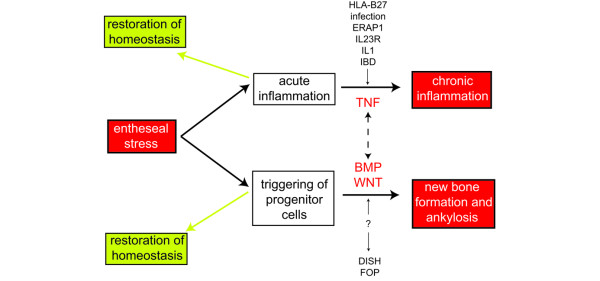Figure 2.
A view on the relationship between inflammation and ankylosis in SpA. The primary event is considered 'entheseal stress'. Biomechanical factors and microdamage are likely to play roles in this. Entheseal stress leads to triggering of an acute inflammatory reaction and of progenitor cells. In most instances, the acute events go unnoticed and homeostasis is restored. Under specific circumstances, the acute events can turn into a chronic situation in which inflammation and/or ankylosis are prominent. Different pathways regulate chronic inflammation and new tissue formation, but these pathways are likely to influence each other. Genetic factors are likely to steer chronic inflammation and new tissue formation. For the latter aspects, clues may be found in other bone-forming diseases. ERAP1, endoplasmic reticulum aminopeptidase 1; IBD, inflammatory bowel disease; IL23R, interleukin-23 receptor.

